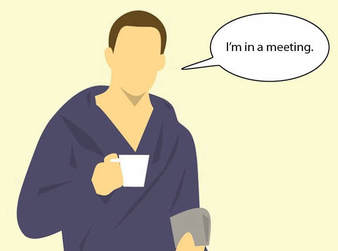How making communication more efficient makes it less efficient

Once upon a time, ad agencies had the luxury of a set-up speech—what some of us call the “pre-mumble”—before showing creative work. Online, there’s often no choice but to put the pre-mumble in an email.
It’s fast and convenient. Trouble is, there’s no guarantee the client will read it.
Just yesterday, I warned a client in an email, “When you click to the staging area, your browser will throw warnings at you. Don’t let them scare you. Proceed with confidence.” Moments later he sent me a panicked email with—you guessed it—a screen grab of a warning. Ever tactless, I replied, You didn’t read the cover email, did you. “No,” he wrote back, “I was too busy.” Restraint not being one of my strongest virtues, I was frankly surprised that I managed not to fire back, You didn’t have time to read three short sentences, but you had time for two additional email exchanges to clear up a non-problem.
Whenever possible, I do the pre-mumble over the phone and, only then, send the work while the client holds. Of course, for all I know the client is Facebooking or playing Words With Friends instead of listening.
Skype’s camera option helps by letting you see what your client is up to while you elocute. But then, that means foregoing the luxury of presenting while looking unpresentable. I’m not sure it’s worth it.
 RSS Feed
RSS Feed



